Characteristic features inherent Baroque style. Decorative features acceptable to modern life.
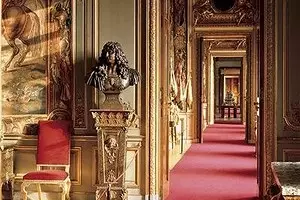
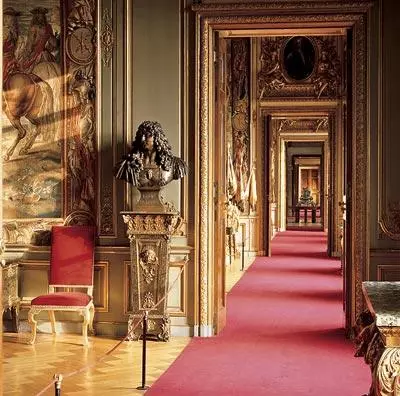
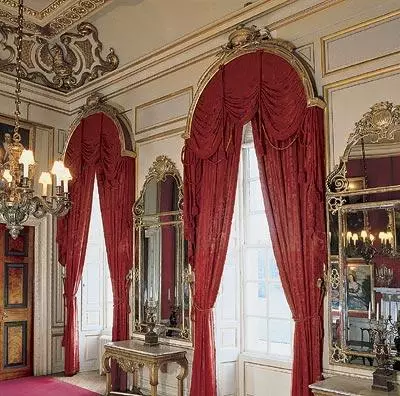
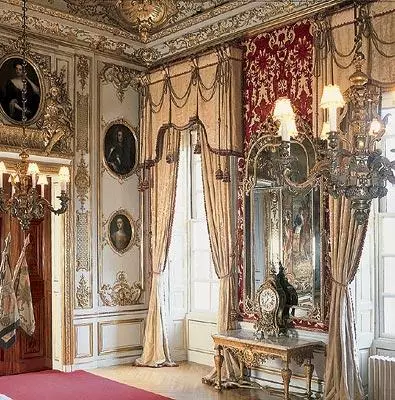
At the top and bottom, two living rooms, an example of a decorative solution of the baroque space. Enlistent mirrors in carved gilded frames. The gluable solution is used royal and at the same time sensual combination of red with gold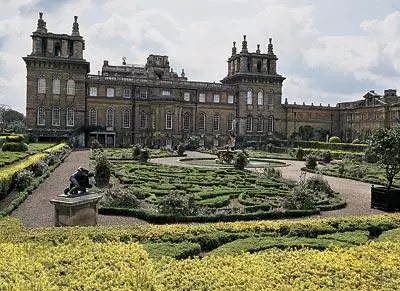
Palace Blenheim (England). Located among the regular park in the French taste. Symmetry of the composition of the Palace and the flibels adjacent to it meets the ideas about the harmony of Baroque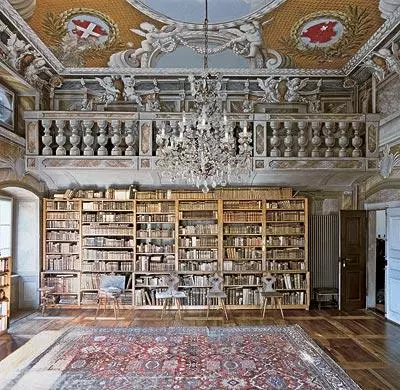
Library. The ceiling is decorated with painting, imitating plant forms and ornaments. The room is sustained in warm golden gamme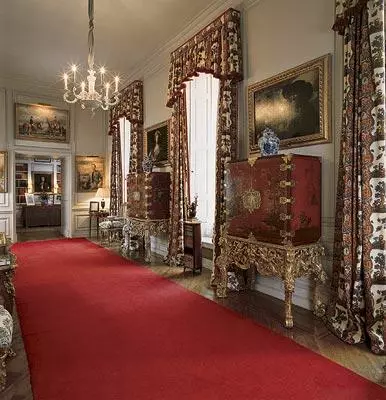
Cabinet in the style of shinoisry. Simple decor applies black and red Chinese varnishes in combination with gilding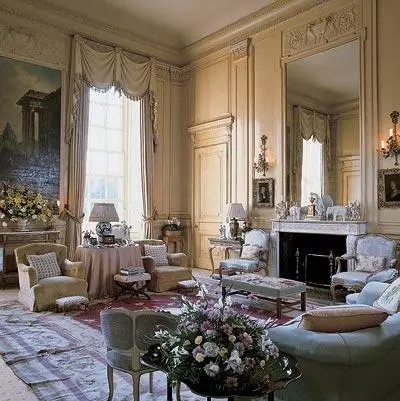
Another version of Baroque in modern times. The living room is visually enlarged with the help of a mirror and a picturesque panel with an image of an architectural landscape in common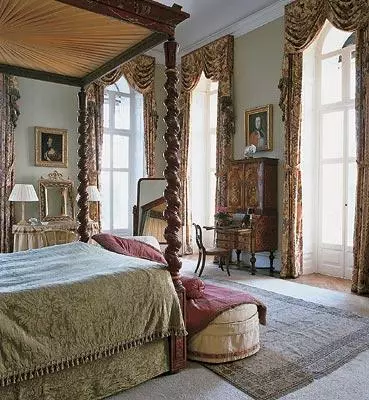
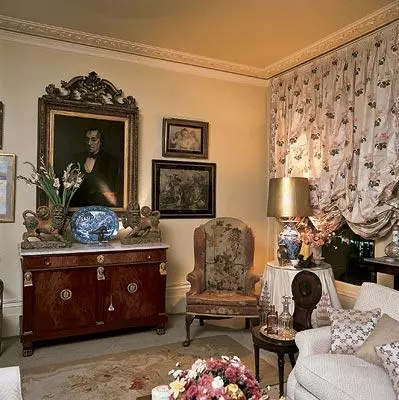
A small modern living room in which the style of the stylist accents is organically fit and a cozy chair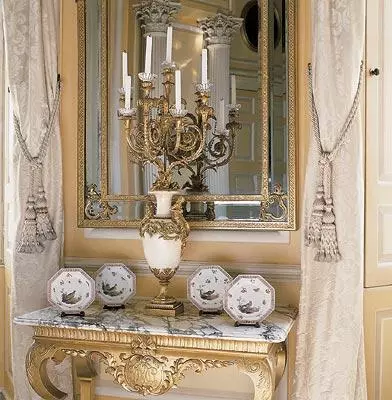
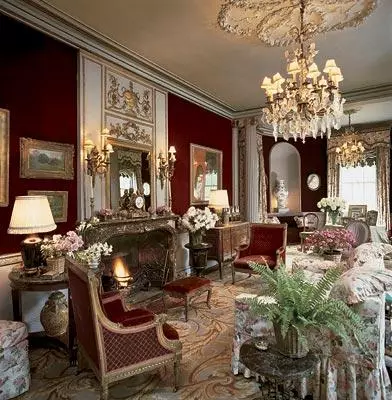
Modern living room with baroque decor elements: on the ceiling of the stucco, the sconce is reproduced by the shapes of the Zhilandoles, in the outlines of the furniture used the wave-like baroque lines
'' With Milic Paradise and in the Palace! Give me my salasWith marble colonnade to the horizon. Give me mine
Shepherd, but, if possible, make her duchess! ''
Victor Hugo '' Molded ''
Today we have to choose something acceptable for modern life from the rich heritage of the Baroque style. Forward the queue, we will define with its signs and receptions, to "take the ship of our time" the most spectacular, obvious and bright. Now, do not forget about the relative ease of execution. Votychychi from LouisXiv, we do not set ourselves the task of creating an interior on the century for each chair repeated after the owner: "The state is me!"
So, Barocco (ITAL. Freaky, strange) - perhaps the most emotional among styles. Interiors prevailed complex layouts, dual and twisted columns, the motive of oval
Decorative properties of style
We remember that there are two approaches to the organization of space, both external and internal, is constructive and decorative. Baroque was exclusively decorative style. Moreover, all structures of the building certainly disguised as a spectacular design of interiors. At the same time, the Baroque is the most plastic style, which takes out lush curls and complex ornaments, flowable forms of furniture and painting in the finishing of the premises.Space style
The spatial construction of the Baroque style is distinguished by liveliness, constant development. Classical clarity, static is now inferior to an energetic dynamics. The building seems to grow from the urban environment, hit by his expressive external forms. The interior certainly begins the staircase, immediately specifies the tone to the rest of the inner space. Spectacular enfilade disciplines a further movement, forcing it to develop a cascade. This cascade of space is especially attractive and at the same time complex when playing a baroque style feature.
No matter how energetic began, the developing space is still striving for the highest emotional point of the room or the front gallery. Movement can be stormy, powerful in the front rooms and intimate, small in intimate quiet. For dynamism in the baroque interiors, the change of angles and various kinds of optical effects were used. For example, the hall visually increased with mirrors, specially located on the walls and even the ceiling. There was a whole system of optical debris that imitating the volume, open space creating a false perspective. The dynamics of space also emphasized the heavy forms of baroque furniture, picturesque and stucco decor.
Biography style
One of the legislators of the Baroque era was the Italian architect, sculptor and artist XVIIVeque Giovanni Bernini. There were a unique synthesis of architecture and sculpture created. Working both as a painter, and as a schedule, Bernini left the wonderful expression of the image of his own person, as well as a number of witty cartoons, having made one of the founders of art caricature.Loves Vatican and Pope, Bernini received the most responsible church orders. In 1624-1633 Georgia, he erected over the main altar of St. Peter's Cathedral, the majestic and dynamic in his painting Bronze Baldahin. The basis of the design is spiral-shaped bending columns that create the effect of continuous growth. Bernini Bernini was appointed chief architect of St. Peter's Cathedral. More than anyone else, Maestro contributed to the formation of new baroque features in the architecture of the eternal city. Moreover, the emerging ensembles did not exhibit a person, but, on the contrary, they treated it, strengthening the festive adventure of the appearance of Rome.
For projects and sketches of Bernini, magnificent fountains are built with expressive figures, personifying natural elements. This is "Triton Fountain" (on Barberini Square, 1640) and Fountain of Four Rivers (on Navona Square, 1647-1652). In addition, in 1656-1665, the area was framed in front of the Cathedral of St. Peter, which secured his meaning as the main church of the Catholic world. Grand, in terms of oval colonnade, according to Bernini himself, "concludes a building in an embrace." The Church of Sant Andrea Alquicyrina (1658) is later being erected, who fonds the viewer with a powerful rhythm of its forms, and "Royal Staircase" is created in Vatican (1663-1666). Thanks to a cunning perspective trick, a man descending from above looks much higher than in fact. Invited to Paris, to the Royal Yard, Bernini performed in 1665 monumental projects of the new facade of the Louvre, and in 1671-1677 - the project of the equestrian monument to Louischiv.
Russian baroque has its own history, slightly more modest than European. Menshikova Tower and Buildings of the Naryshkinsky Barochko, Menshikov Tower and the buildings of the Naryshkinsky Baroque were well preserved, in St. Petersburg, the Elizabethan baroque became an interesting phenomenon. The brightest architect of the XVIIIV, who worked in this style was, of course, Bartholomew (Bartolomeo) Rastrelli. There are a baroque buildings and, especially, the interiors will literally in line: the Winter Palace, the Ekaterininsky Palace in the Tsarskoye Selo, the few early palaces of St. Petersburg. It is the interiors of the Grand Kremlin Palace: a bedroom and a living room of the Empress, the front-line living room, the emperor's office, the front-hand sofa. In the whole state, the Russian magnificent palace style can only boast both of both capitals.
Workshop
Now choose the main stylistic parts of the baroque that you can take advantage of the creation of your interior. To begin with, define stable and moving elements in space. Based on what will be constant and unshakable - partitions or walls, door or window openings, a floor drawing or a fountain in the center of the room, - assign interior priorities.
Step one. Find out the possibilities of your home or apartment. Consider, massive and energetic Baroque forms are difficult to "squeeze" in 40m2. The apack baroque interior is organically connected with architecture, your task is to combine the appearance and the "filling" of the building.
Step second. Create a sketch and plan. To do this, it is necessary to make an exemplary calculation of the space as a whole and each room separately. Otherwise, it will not be possible to relate the proportions of each of the baroque elements on which you stop your choice, with a real volume. Make a few sketches, each of them is dedicated to one style reception or accent.
Step Three. The queue composition and dwelling layout. The first sketches will concern the planning solution. If possible, create an imfilade. If there is no such possibility, try to approach the problem creatively, imitating the baroque space, "spinning" it relative to the composite center. Here are relevant levels of levels, divergent ceilings, twisted stairs and the like of the sieves. Part of the sketches dedicate itself to architectural elements, be it a twisted column or pylon.
Step fourth. The next sketch may allow the decorativeness of your interior. Let's say, perform a sketch of rooms with stucco, and then, consistently enriching the decor, add a picturesque ornament.
Now you can stop and look at the imaginary interior. At this stage, you have to make the final choice between the total reconstruction of the dwelling and a less radical style accent.
Layout and composition
Suppose you preferred a cardinal solution - creating a planning composition and the use of baroque architectural parts. Here we are not very immersion against the tradition of the Russian palace baroque, if you save the corridor. The apartment is divided into the front and private half, and the corridor serves as a kind of gallery. Arches are appropriate, columns (dual or twisted), numerous mirrors.The frontroom facilities include a living room, a dining room, a salon, possibly an office. Hovering the layout of the living room and dining room, remember that their practical combination with the kitchen or each other in the baroque interior is unacceptable. If you can afford a separate dining room, do not neglect it. Major support the spirit of luxury and abundance.
Parade rooms are traditionally located closer to the entrance. They can be placed on both sides of the gallery corridor, thereby creating or imitating the baroque double halls. When decorating the living room, boldly use the whole decorative style arsenal: stucco ceilings, consoles, plafoons, lintures and especially mirrors. Mirrors in the palace decoration can be devoted to a whole poem. Located in niches, over consoles and fireplaces, and on the ceiling, they crush space, increase it or form unusual angles. No other style did not use the mirror so poetically and so creatively. Therefore, try to fully demonstrate the illusionist capabilities of the mirrors in your interior.
Proportion and volume
When reproducing proportions and volumes of style, do it a little bit. Slightly weightlifting the columns or, on the contrary, use exaggerated twisted and fractional forms. A little more than you need from the point of view of modesty, turn on the gilding into the decoration of walls and furniture. Slightly lush, let it be draped ... the visual changes in volumes and proportions can be achieved at the expense of the picturesque decor and the correction in the ratio of the height and width of the columns.
Plastic solutions
In the plastic design of the wall, it is good to use a slightly protruding semi-colonges of a rectangular or semicircular shape with gilded capitals. Wall plane, except mirrors, scenic inserts or verdures, decorated with relief profiles. These techniques create a dynamic plastic surface and convert an inert plane into an elegant "back".Textures
From plastic transformations go to the materials. The most luxurious and noble of them will be obviously marble. Today the choice of decorative finishing marbles is extremely wide. Live, with streaks and soft reflexes, the texture of this material has genuinely palace elegance. From marble, you can perform not only columns or fireplace cladding, but also countertops. Their cold gloss will be opposed by warm light of abundant gilding. I slightly muffle this baroque radiance you can wall vermures or trellis with pastoral and mythological scenes. Their soft, absorbing light texture will create an atmosphere of trust intimacy. In-bedroom, children's room, children's room, can use all types of velvet drapes. Paper rooms are preferable to maintain the overall shine and prefer fabrics with a smooth surface - silk, atlas, pass. Iick the skin!
Decorative style features
You have the right to make a dominant interior design element, using it as decorative. It may be an arch, column or pilaster. For modern imitation, it is reasonable to choose the motive of a gilded console and rhythmically beat it in the interior, without resorting to radical spatial transformations. Increased decorative elements that are actively forming the image of the palace interior, the mirrors are indispensable.The final stage of work will require you minimal effort and is limited to the inclusion in the interior of the style accent. To create a palace atmosphere, Baroque will be enough one subject, best of all furniture. Stylized under the ancient bed with a canopy, an antique bureau or a lady table for needlework from an exotic tree will make your bedroom or a branch of the branch of Louisxiv chambers or Catherine Great.
Each big style requires real life to fit it forms. Simply put, style is a lifestyle embodied in art. Baroque chants the charm of power, the eternal dream of royality. This style will always be enthusiastic of fabulous luxury. Perhaps, so he again and again returns to us under different names, Neurokko, Palace Style, etc. If you could assign your coat of arms to each large style, for Baroque this, no doubt, would be a horn of abundance.
Russian-Designer Phrasebook
Ansfilada (FR. Enfilade) - a number of premises adjacent to each other, the doorways of which are located on one axis, which creates a cross-cutting perspective (for example, in Baroque Palaces).
Baluster - Column railing, fences.
Verduura. - Wall-mounted carpet with vegetable motifs, landscape, heraldry, but not with figures. Posnovna verdura were popular in the XVII.
Volute (ITAL. Voluta, letters. Curl) - ornament, sculptural decoration in the form of curl, spiral with "eye" in the center. Architectural detail of eaves, portals, doors, windows. Composite part of order holders.
Lyrandol. - Figure candlestick for multiple candles. Put on the table or attached to the wall. Especially popular in the baroque and rococo era.
Intarsia - type of inlaid from plates of wood of other breeds and colors on wooden subjects. Intars regions decorated furniture in the Renaissance era and especially Baroque.
Console (FR. Cosole) - protrusion in the wall or taken by one end to the wall of the beam, supporting cornice, balcony, sculpture, vase, etc.
Lepunina - Relief decoration (figured, ornamental) outside and inside buildings, as a rule, cast or pressed from plaster, concrete, etc.
Marquetry - Inlay, made by sticking plates from various wood species and other materials. Marquetry technique was extremely popular in Baroque and Rococo furniture.
Naryshkinsky style (Atakzhe Naryshkinskoye or Moscow Baroque) - conditional, by the name of the Nazillian Nazill, the name of the style of the style in the Russian architecture of the end of the XVII-early XVIII centuries. It was fitted with elegant multi-tiered churches (inkilah and Troitsky-Lykov) and secular buildings with a lush carved white décor.
Pilons. (Pylon. Pylon, letters. Gate, input) - Massive pillars that serve support for overlapping or standing on the sides of the building portal, entry to the bridge.
Putty - Infants from the works of decorative art of the Baroque and Rococo era. Symbolized wealth, health, abundance. Not to be confused with angels, from which Putti is distinguished by ancient origin and healthy sensuality.
Rustic (delates. Rusticus- Simple, rough) - masonry or cladding of walls of structures with stones with a rough-beam or convex facial surface ("Rusta"); Facing the rudiment can be performed in plaster imitating such a masonry.
BULLY style - The style of furniture manufactured in the workshop of Charles Bul (the end of the XVII-beginning of the XVIII century). The peculiarity of this furniture was the phanster of black wood and the use of intarsions.
TDO - Round picturesque insert. Most often, TDODO was placed over window or doorways.
Shinoazry (SPR. "Chinese") - furniture decoration style in conditional Chinese taste.
Trellis - Handmade wall carpet.
